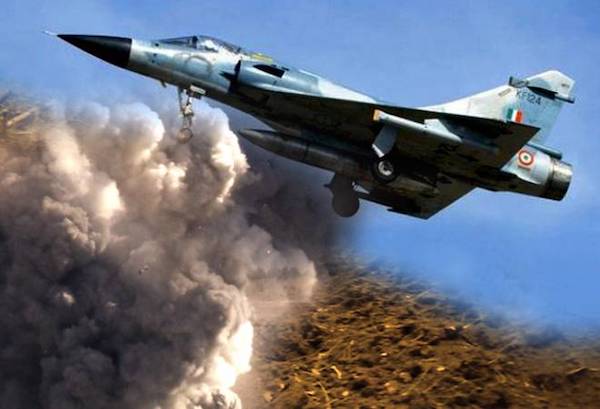
“Pyongyang’s missile program has progressed over the last few decades from tactical rockets in the 1970s, to short, medium-range ballistic missiles in the 1980s and 1990s. Systems capable of even greater range are under research and development.”
A defiant North Korea has fired yet another missile. It fired four ballistic missiles into Japanese waters in February. The missiles were fired towards the Sea of Japan. After flying an estimated 1000 km, the missiles fell into Japan’s exclusive economic zone – a 200-nautical mile area off Japan’s coast. These launches defy UN resolutions that ban North Korea from any use of ballistic missile technology whatsoever. North Korea has violated these resolutions many times in the past. Launching four missiles in rapid succession shows remarkable operational skill – a matter of grave concern for the international community.
The estimated range of the missile that North Korea is inching ever so close to now could put parts of the US, among other countries, within its firing range. What is petrifying is that North Korea does not shy away from the fact that it has an active nuclear-weapons program. It has carried out several nuclear tests. The most recent nuclear test was conducted in September 2016.
The missile launch has been met with heavy condemnation throughout the world. Japanese Prime Minister Shinzo Abe told the Japanese parliament that the launch clearly shows North Korea has entered a new stage of threat. He called a meeting of the country’s National Security Council.
China, on the other hand, has “proposed” that North Korea suspend its tests of missile and nuclear technology to “defuse a looming crisis”. China has been known to supply nuclear knowhow and material to North Korea in the past. So much so that the North-Korean launch vehicles are all made in China. North Korea is often called China’s spoilt brat. Unfortunately, the fact remains that China supports and feeds the rogue nation to use it as a pawn in the game of international relations. History has shown us time and again that nurturing a serpent is always treacherous. The serpent is bound to show its fangs and inevitably bite the possessor at some point in time. Understandably, this region is of special importance to America. The ASEAN (Association of South-East Asian Nations) includes Indonesia, Malaysia, the Philippines, Singapore, Thailand, Brunei, Cambodia, Laos, Myanmar and Vietnam. These countries have a collective gross domestic product (GDP) of approximately $1.3 trillion. These countries are also the most trade-dependent formal grouping of nations in the world, with trade accounting for just less than 100 percent of their aggregate GDP. The largest market of ASEAN is the US, with a huge investment of roughly $153 billion, as compared to $45 billion in China and $16 billion in India. These figures are exclusive of the US investment in the oil and gas sector in this region, which could mean twice the total US investment.
The Chinese economy has overtaken the economy of Japan, becoming the second largest in the world. This has changed the power landscape in the region. China’s growth has troubled America even in the past. A growing China indeed means that the US stronghold in the region is on the decline. Not only that, the US power might also be challenged in the region by an imminent yet growing China. China is trying to persuade the world, in particular its neighbors and the United States, that its development under the “peaceful-rise” policy does not pose a threat to the international order. China argues that countries will gain from its rise due to the economic benefits of expanding trade and investment. China also lays stress on the fact that with soft power, the maintenance of positive relations with its neighbors enhances its own security. China’s desire to alter the balance of power in the region makes it a strategic competitor to the United States. North Korea has, on several previous occasions threatened an all-out war, stating it will hit the US, Japan and South Korea with nuclear weapons. Pyongyang has often raised the rhetoric and has wielded its nuclear capability in the past. The warnings and threats might not be taken extremely seriously by the world at this point in time. North Korea is desperate and might go to any extent to be taken seriously in the world. It has remained reckless in its actions. How many nuclear nations do you know that are ruled by a 30-year-old despot?North Korea would go to any extent to be seen as a power in the region and this is a frightening thought. It poses a grave threat to world peace. The biggest security concern is the one that comes from its arsenal of mid-range missiles that have the capability to hit parts of Japan and South Korea. An attack on these strong economies would not only cause a great loss of human life but also damage the global economy.
North Korea is a serious threat to the East-Asian security. A stable, economically, militarily growing China might have grand designs for the foreseeable future, but remains somewhat compliant as of now. North Korea remains an apparent, imminent and a potent threat in the region – ready to indulge in nuclear warfare at any time.
The country’s missile technology and nuclear programs threaten international stability. The White house has used stern language but it remains to be seen how the Trump administration will tackle the situation. Several peace-loving nations should come together to challenge China’s might in the region. North Korea is a rogue regime and the United States should deal with it resolutely, but on the basis of deterrence. An enemy who has nothing to lose is indeed a dangerous enemy.

(The author, Sartaj Chaudhary, is an alumnus of Kent University Law School and an expert in international law)





Be the first to comment